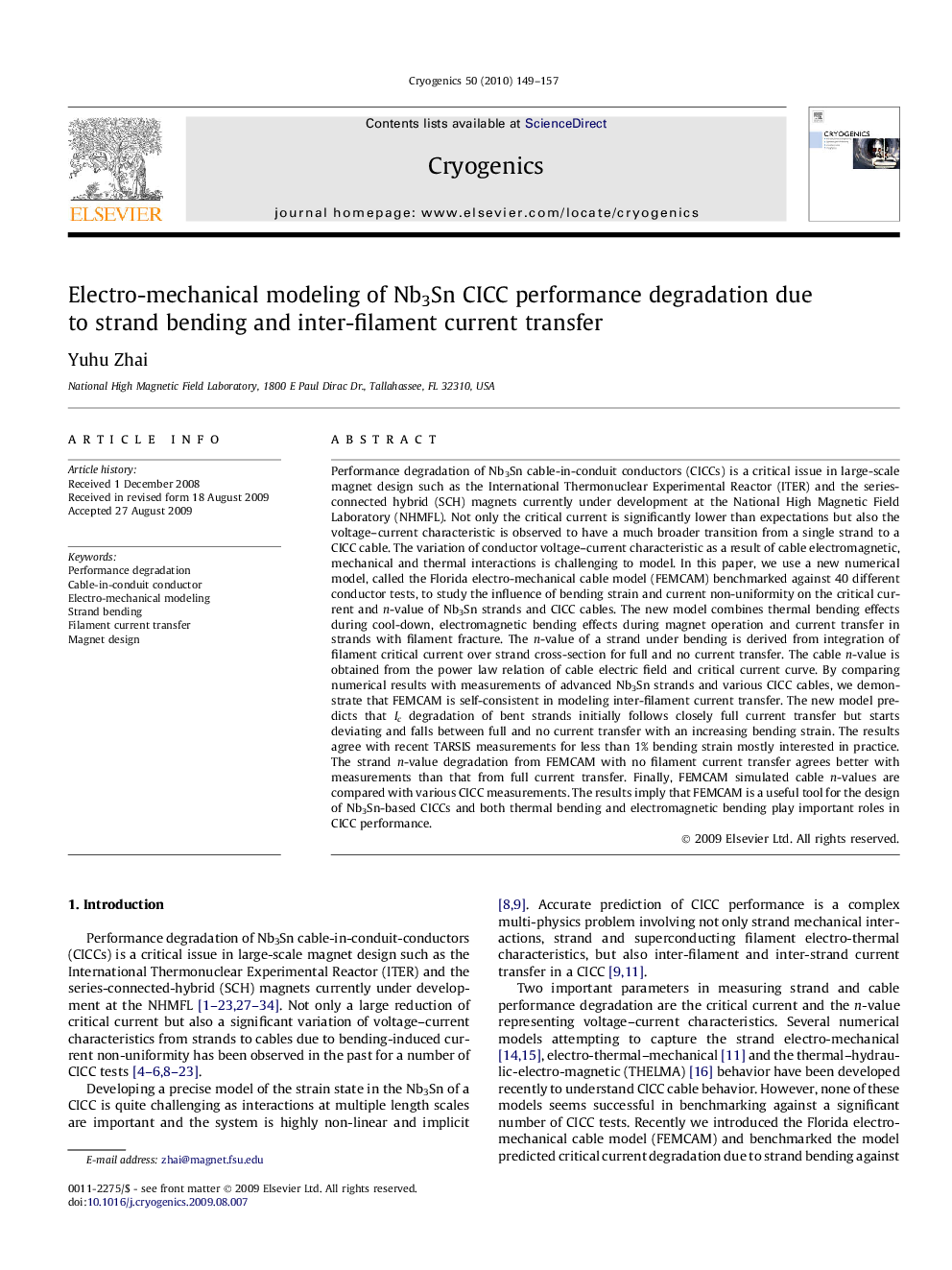| کد مقاله | کد نشریه | سال انتشار | مقاله انگلیسی | نسخه تمام متن |
|---|---|---|---|---|
| 1507928 | 993940 | 2010 | 9 صفحه PDF | دانلود رایگان |

Performance degradation of Nb3Sn cable-in-conduit conductors (CICCs) is a critical issue in large-scale magnet design such as the International Thermonuclear Experimental Reactor (ITER) and the series-connected hybrid (SCH) magnets currently under development at the National High Magnetic Field Laboratory (NHMFL). Not only the critical current is significantly lower than expectations but also the voltage–current characteristic is observed to have a much broader transition from a single strand to a CICC cable. The variation of conductor voltage–current characteristic as a result of cable electromagnetic, mechanical and thermal interactions is challenging to model. In this paper, we use a new numerical model, called the Florida electro-mechanical cable model (FEMCAM) benchmarked against 40 different conductor tests, to study the influence of bending strain and current non-uniformity on the critical current and n-value of Nb3Sn strands and CICC cables. The new model combines thermal bending effects during cool-down, electromagnetic bending effects during magnet operation and current transfer in strands with filament fracture. The n-value of a strand under bending is derived from integration of filament critical current over strand cross-section for full and no current transfer. The cable n-value is obtained from the power law relation of cable electric field and critical current curve. By comparing numerical results with measurements of advanced Nb3Sn strands and various CICC cables, we demonstrate that FEMCAM is self-consistent in modeling inter-filament current transfer. The new model predicts that Ic degradation of bent strands initially follows closely full current transfer but starts deviating and falls between full and no current transfer with an increasing bending strain. The results agree with recent TARSIS measurements for less than 1% bending strain mostly interested in practice. The strand n-value degradation from FEMCAM with no filament current transfer agrees better with measurements than that from full current transfer. Finally, FEMCAM simulated cable n-values are compared with various CICC measurements. The results imply that FEMCAM is a useful tool for the design of Nb3Sn-based CICCs and both thermal bending and electromagnetic bending play important roles in CICC performance.
Journal: Cryogenics - Volume 50, Issue 3, March 2010, Pages 149–157